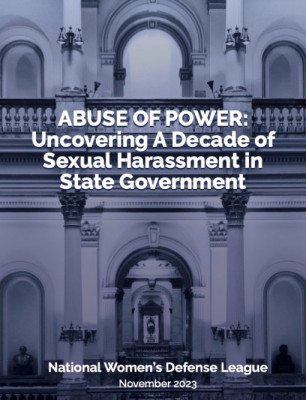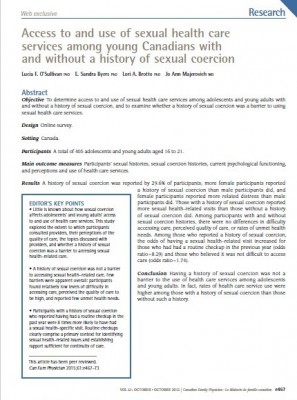Start a Search:
Author: Action Alliance
A Practical Guide for Creating Trauma-Informed Disability Domestic Violence and Sexual Assault Organizations
A Practical Guide for Creating Trauma-Informed Disability, Domestic Violence and Sexual Assault Organizations was developed through the Violence Against Women with Disabilities and Deaf Women Project of Wisconsin. It is designed to highlight and explore effective trauma-informed conditions or core values that victims, survivors and people with disabilities are finding essential for safety and healing. This document is a guide, not a manual. It is designed to lead readers on a journey of exploration into the context of these conditions to promote dialogue and understanding, and spur implementation of strategies for domestic violence, sexual assault and disability organizations to become more trauma-informed.
A Toolkit for Systems Advocacy on Behalf of Victims of Battering Charged with Crimes
Created by the National Clearinghouse for the Defense of Battered Women, the Toolkit is designed to support thoughtful approaches and strategic change on behalf of victims of battering who are facing criminal charges, serving sentences, and/or reentering your community after jail or prison. It is our hope that the Toolkit will encourage your advocacy organization and community to create or further enhance safe, fair, and just responses to victim defendants as a key part of your response to domestic violence.
Audience
Community-based advocates engaged in systems advocacy are the primary audience for the Toolkit. It is not designed to provide basic information about battering—it is not a “Domestic Violence 101” resource—nor is it a primer on how to start, manage, and sustain a coordinated community response. Such information can readily be found elsewhere, including in the Toolkit’s links and references. Regardless of whether and to what degree your advocacy organization is currently involved with victim defendants, the discussion and tools included here will benefit your work on behalf of victims of battering overall. The Toolkit provides encouragement and support to assess your work with victim defendants and develop a plan of action for what your community can do to keep victims of battering out of the criminal legal system as defendants and better assist those who do become involved.
Overview
The Toolkit provides ideas, strategies, and techniques for addressing the need and challenges related to making victims of battering charged with crimes visible and central in a community’s response to battering. It is organized in five sections:
1. Advocacy on Behalf of Battered Women Charged with Crimes: Why It Matters
Section 1 presents the big picture: the connection between battering and women involved in the criminal legal system and the factors contributing to their over-representation among women defendants, while too often remaining invisible to advocates and interveners.
2. Look Inward First: Advocacy for Victims of Battering Charged with Crimes
Effective systems advocacy on behalf of victims of battering charged with crimes requires a first step of self-assessment by community-based advocates. As advocates, we must get our own houses in order. What are we doing on behalf of victim defendants? Do victim defendants reach out to us? Do we reach out to them? What are the supports for and barriers to advocacy on behalf of victim defendants? Section 2 includes a self-assessment survey that can be adapted to examine current policy and practice in your organization.
3. Prepare for Distinct Challenges
Section 3 identifies several distinct and interconnected challenges to system advocacy on behalf of victims of battering charged with crimes. It suggests strategies to help advocates and, ultimately, the community response address (1) the magnified risks related to battering for victim defendants, (2) the need to understand women’s use of violence in context, (3) the criminal law as a problematic tool to address battering, and (4) how to welcome a defense-based perspective when systems advocacy has traditionally been so closely tied to prosecution.
4. Changing Criminal Legal System Practice
Providing a safe, effective, and just response to all victims of battering, including those charged with crimes, starts with knowing what is happening in our communities. What do we know about victims of battering charged with crimes? What might we change to help minimize the number of victims getting arrested and provide a better response to those who are charged or incarcerated? Section 4 includes templates and tools for gathering the information that helps answer these questions. It also identifies specific actions at each step of the criminal case process that will help keep victims of battering out of the system as defendants in the first place and provide a safe, effective, and just response to those who do become involved.
5. Resources and References
Section 5 recaps the various references and citations included throughout the guide. It provides links to specific publications and other tools available via the National Clearinghouse for the Defense of Battered Women. It also includes resources specific to coordinated community response and connections to jurisdictions working to address issues related to victims of battering charged with crimes.
Again, the Toolkit supports systems advocacy on behalf of victim defendants. It helps position advocates to influence CCR partners and criminal legal system agencies to adopt practices that keep victims of battering out of the criminal legal system as defendants and ensure that victims who are charged with crimes encounter knowledgeable interveners that can provide a “battering-informed response.” A battering-informed response means that practitioners at every step of the way, from patrol officers to probation agents, are prepared and authorized to act in ways that identify battering and that reflect an understanding of the pervasive reach of battering in our society and the ways in which criminal legal system agencies can reduce that harm. This understanding includes recognizing and reducing the harm caused when victims of battering are charged and incarcerated.
A-Z Advocacy Model: Asians and Pacific Islanders Build an Inventory of Evidence-Informed Practices
Asian and Pacific Islander domestic violence agencies have built an extraordinarily rich tapestry of approaches where advocates do everything it takes to mitigate barriers, challenge patriarchy, strategize to build safety and well-being, and redefine culture.
The A-Z Advocacy Model is anchored by five principles that analyze gendered and racialized cultural contexts, confront root causes, and engage in systems change and cultural transformation; all the while, holding women's equality and empowerment central to community well-being:
1. An analysis of intersectionality and patriarchy deepens the understanding of root causes and becomes fundamental to program design.
2. Culturally-specific programming means designing services that address ethnic and linguistic diversity within and among Asians and Pacific Islanders.
3. Survivor-centered advocacy is based on a culturally-specific analysis and definition of domestic and family violence.
4. Integrating an analysis of, and responses to, gender-based violence when working with API survivors of domestic violence became evidence-informed practice.
5. Engaging in systems advocacy builds gateways to services through collaboration, policy advocacy, and research.
Abuse of Power: Uncovering a Decade of Sexual Harassment in State Government

The inaugural report of the National Women's Defense League reveals that sexual harassment by sitting state lawmakers over the last decade is pervasive and ongoing: At least 130 statehouse lawmakers were accused of sexual harassment by 359 individuals since 2013 – with actual numbers likely three times as much due to under reporting by survivors and legislatures. This report report reviews the past 10 years of data and explores who is experiencing sexual violence and what accountability looks like/doesn’t look like for elected officials.
Access To and Use of Sexual Health Care Services Among Young Canadians With and Without a History of Sexual Coercion

The goal of this 2015 online survey was to determine access to and use of sexual health care services among adolescents and young adults with and without a history of sexual coercion, and to examine whether a history of sexual coercion was a barrier to using sexual health care services.
The study ultimately found that having a history of sexual coercion was not a barrier to the use of health care services among adolescents and young adults. In fact, rates of health care service use were higher among those with a history of sexual coercion than those without such a history.

